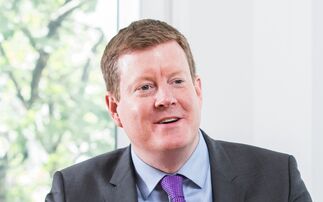Jonathan Stapleton speaks to B&CE’s Patrick Heath-Lay about TPP's AE journey.
It has been just over ten years since The People's Pension (TPP) was set up by B&CE, and coming up to a decade since auto-enrolment launched in October 2012.
At the time of TPP's launch, B&CE said it hoped to see its membership grow to at least one million - a milestone it has comfortably achieved, with the scheme now covering some six million people and overseeing some £18bn of assets under management.
Patrick Heath-Lay has been instrumental in this journey - having played a key role in launching TPP in 2011 before taking over as chief executive of B&CE in 2012.
"In terms of size, scale and outcome, it has been fantastically successful," Heath-Lay explains - noting the hard work that had been put in by the team at B&CE as well as by trustees and stakeholders over the past decade to get TPP to where it is today.
Despite the success, Heath-Lay says the operational challenges of bringing on some 100,000 corporate customers and bringing on up to 1,000 employers a day at the peak of auto-enrolment (AE) had been "incredibly challenging".
B&CE worked hard to scale the scheme up for smaller employers to cope with these challenges - introducing innovations such as the ability to sign up for the product within two minutes, helping make the process "low touch" while still being able to maintain service support for those that needed help.
But Heath-Lay says the organisation needed to go even further to cope with the volumes they were seeing at the time.
He says: "We were writing something like 25% to 30% of the available market very early on in the AE timeline and realised, when we got to the smaller employers, that was just not sustainable."
Heath-Lay says the business needed to find a way of still staying open for everyone and continuing to offer the same level service and support, but in a way that would allow it to cope with the volumes.
He explains: "We needed extra investment, we needed extra help. And that's when we introduced our one-off employer fee charge for smaller employers coming on. We felt that would allow us to sustain the service quality as well as regulate a little bit the size of the companies that were coming at us in that in that phase. And this worked - we went from something like 25% to 30% of the market, down to about 10% to 12% of the market. We could cope with that."
Onboarding wasn't the only challenge faced by providers in the early years of AE - and Heath-Lay notes policy and regulation was also evolving throughout that period, with areas such as the pension freedoms and master trust assurance frameworks all coming through during that period.
He explains: "We weren't just reacting to the market, we were having to react to the regulator and in some areas catching up."
Member service
While TPP focussed initially on the onboarding of employers, the focus of the organisation has moved towards the member - and it is now very much looking to improve digital engagement and help members self-serve and self-manage their pensions.
"Our evolution has been to never lose sight of member. But I think we're seeing through many of the propositions in the market much more focus on the convenience factor for members now, allowing them to be able to operate much more conveniently through their mobile, through digital technology.
"We like others are investing in that space right now. But there's certainly been a shift and we want to make sure that whatever we provide is good value and good value for people that typically haven't been served in the past."
Small pots
AE has been a huge success as a policy, but it has thrown up a number of issues for the industry, especially when it comes to small pots.
The Pensions Policy Institute estimates such small deferred pension pots could number around 27 million by 2035 if nothing is done to resolve the issue.
Heath-Lay believes the issue isn't going to go away on its own and is one that needs an industry-wide solution. He adds the challenges have been particularly acute for a master trust sector that had done a lot of the "heavy lifting" for AE and hasn't been helped by recent rises in per member regulatory fee levies.
He explains: "This means that, proportionately, we carry a huge amount of the costs for holding on to very, very small amounts of money.
"I think we need to find some, perhaps more tactical solutions to deal with it - potentially even refunding some of the very, very small ones, because it's just not in anyone's interest to hold onto this money."
Heath-Lay adds: "Ultimately, we need a more efficient way that the industry can work together on this and get these pots to the right people or in the right place in a really efficient way. And I think that's what's missing from some of the work that's being done today."
Moving into the second decade of AE
Going forward, Heath-Lay thinks the main challenge will be around pensions adequacy - noting that many of the points raised by the 2017 review have still not been put in place.
And, while he understands a lot has happened since 2017 - including Covid and broader economic issues - it had been a disappointment not to have any reform timetable in place.
"What's been disappointing from 2017 is we just do not have that timetable laid out, even if it's several years out and even if it happens over quite a long duration," he says. "You have got to put the stake in the sand and say, we've got to start and we've got to plan out. Because the longer we leave it, the more people we are going to be having landing at retirement and finding that what they thought they were doing to put them in an adequate place in retirement is not. And that has the potential to actually undermine AE over the longer term."
Heath-Lay adds: "It is really important we try to make sure that people end up with the right level of saving at retirement, and do the best by them. And I think government has to take the lead on this and we as an industry have to make sure that we're there to support it."









